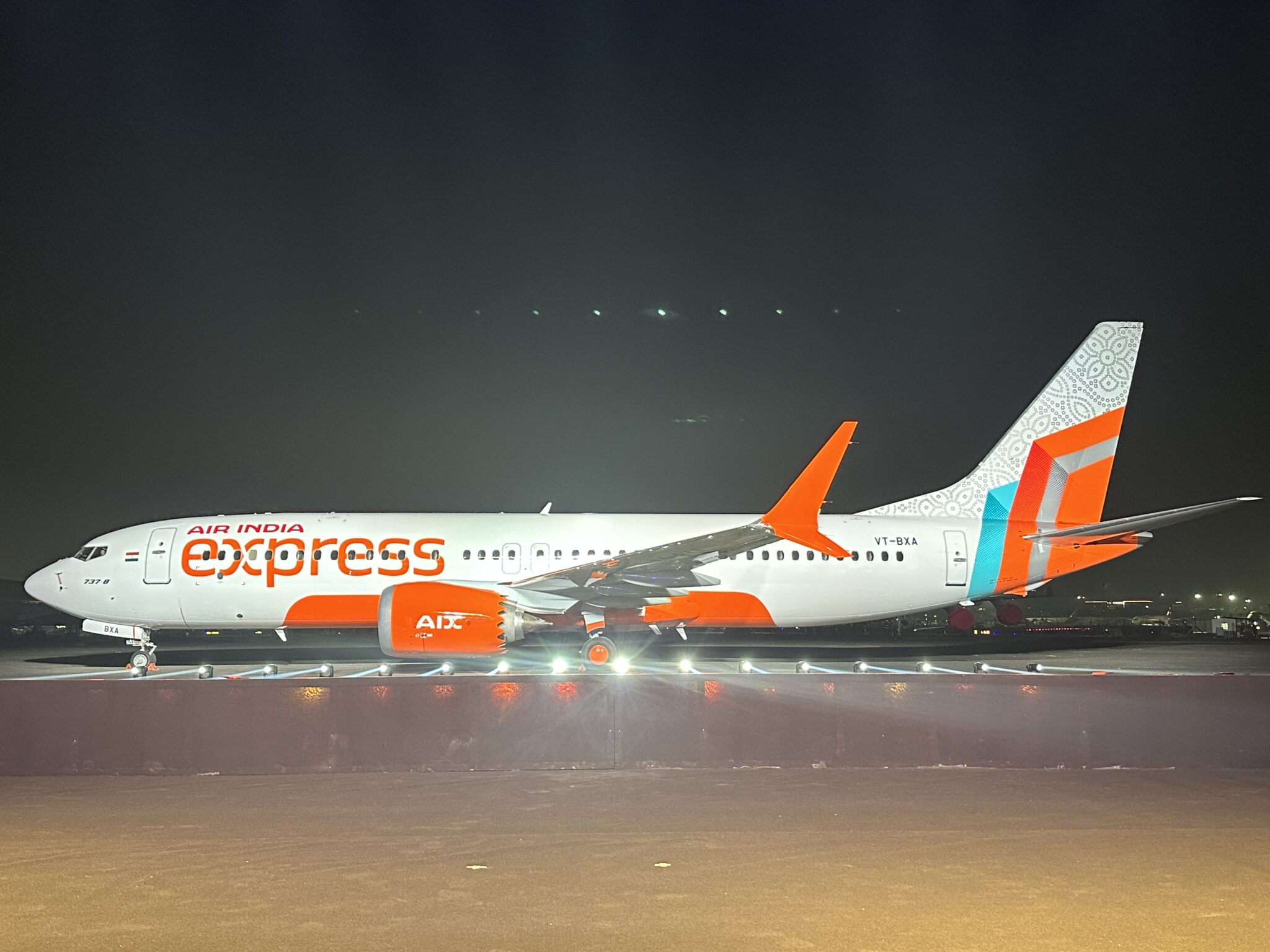Skift Take
All of Air India Group is transforming, but nowhere will the transition be as stark as Air India Express.
This week in Mumbai, Air India Express unveiled its brand new look on a brand new Boeing 737–8 aircraft. The message was clear: A break away from its staid image as a sleepy subsidiary no one talks about.
The airline’s visual identity now features a bright color palette of orange and turquoise, with tangerine and ice blue as secondary colors. It has built its branding around the letter X, and is clearly trying to connect with a younger generation.
But Air India Express is not new and it’s also keeping its connection to an old tradition established decades ago. Each aircraft livery will feature a variable tailfin design inspired by India’s art and crafts heritage, themed “The patterns of India.” The livery of the first new Boeing 737-8 aircraft showcased at the launch draws inspiration from the Bandhani textile design.
Air India Express was established as a subsidiary of government-run Air India in 2005. The idea was for a no-frills carrier to serve routes between South India and the Middle East.
Many of the Indian diaspora, belonging to the Southern Indian state of Kerala, work in the Middle East and do not need a full-service airline for 3-hour flights. The airline operates a fleet of 26 Boeing 737-800 aircraft.
Air India Express is currently in the process of a merger with AirAsia India, established by the Tata Group as a joint venture with AirAsia of Malaysia in 2013, but fully acquired by Tatas in 2022. Rather than spreading time and capital over two subscale carriers, there is one leadership team and the AirAsia name will be gone this month.
Air India Express Roadmap
The goal is for Air India Express to become a dominant carrier in India and serve international point-to-point markets from India.
With underinvestment in the past, Air India Express has been given the firepower by Air India in multiple ways.
For example, 190 Boeing 737 MAX aircraft out of the 470 aircraft ordered by Air India earlier this year are for the fleet of Air India Express.
Some of these will replace existing aircraft, which are up to 16 years old and not as fuel-efficient as the MAX variants. But mostly, these will be for the airline’s growth. 50 aircraft are slated to join the fleet by December 2024, with the first two already being delivered. The airline will effectively double in size within 15 months.
Air India will also vacate many markets across India, handing these routes over to Air India Express, where the group feels they are better served with a budget model over a full-service model. The parent carrier will codeshare with Air India Express to allow people from these markets to travel on the combined AI/AIX network.
Air India Express Set to Compete
The new Air India Express benefits from the hard product of the old Air India Express, with the long-term decision to keep a modern Boeing 737-8 fleet. But it also pulls extensively from the soft product from AirAsia India.
For instance, the MAX aircraft for Air India Express comes fitted with ovens, allowing the airline to offer hot meals as a buy-on-board option to those interested. At AirAsia India, the airline worked on an extensive hot meal offering called GourmAir, which yours truly found a differentiating factor for the airline. The whole menu has been adopted across Air India Express now.
The airline will also offer in-flight entertainment via streaming across the network shortly when partner Sugarbox Networks gets its streaming solutions approved for the 737 aircraft in India.
All this should help when the airline starts offering over 5-hour flights internationally, a segment where market leader IndiGo still stubbornly offers only cold meals, no in-seat power and in-flight entertainment till date.
IndiGo operates over 1,900 daily flights across 84 Indian and 32 international destinations, while Air India Express only operates 300 flights across 30 Indian and 14 international airports.
Clearly, IndiGo could do with some competition, and Indian passengers could do with a well-funded airline that can differentiate itself to grow bigger.
SpiceJet and Akasa, the number three and four in Indian LCCs by September 2023 market share, will be watching closely for cues from Air India Express to compete with IndiGo.
Skift India Report
The Skift India Report is your go-to newsletter for all news related to travel, tourism, airlines, and hospitality in India.
Have a confidential tip for Skift? Get in touch
Tags: Air India Express, india, indigo, Tata Group
